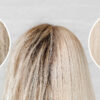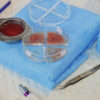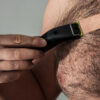Many people dream of having beautiful well-groomed hair. However, atmospheric factors along with inadequate care affect the unsightly appearance and condition of hair follicles. As a result, hair becomes weaker, shineless and loses its natural color. So it’s worth consciously taking care of your hair in a way that suits your individual needs. Properly selected products containing valuable ingredients in the right proportions play an important role.
Proper hair care is possible by knowing the type of porosity – that is, the degree of damage to the hair. A distinction is made between low-porous, high-porous and medium-porous hair. The first type is hair with closed scales, smooth and shiny texture. They also cause the least problems in terms of care. The care of low-porous hair is based on inducing the result of increased volume and bounce at the roots. Highly porous hair is what you’re dealing with when the scales are noticeably tilted, more dull and sensitized. This type of hair is prone to be more brittle and fragile. Medium-porous hair, on the other hand, is characterized by a slight deviation of the scales. They tend to electrify, ripple and let go due to moisture. So they require reconstruction and strengthening.
- 1. What are proteins, emollients and humectants in hair care?
- 2. What role do emollients play in hair care?
- 3. What role do humectants play in hair care?
- 4. What role do proteins play in hair care?
- 5. Why are emollients, humectants and proteins so important in hair care?
- 6. How do I dose proteins, emollients and humectants?
What are proteins, emollients and humectants in hair care?
A balance of proteins, vitamins, herbs, moisturizers and lubricants plays an extremely important role in hair care. Hair likes a variety of active ingredients, but the most important thing, however, is the choice of products, without reckless application of too many cosmetics. That’s why the balance of proteins, humectants and emollients (PEH) plays such an important role. Hair needs all these ingredients, but in different amounts depending on the day or its condition. So choosing the right care is a long, trial-and-error-based road, but the results are worth the challenge.
What role do emollients play in hair care?
Emollients surround the hair and maintain a proper barrier. The emollients create a valuable protective layer of hair against frizz and split ends. The most popular substances in this group include. oils (argan, coconut), butters, waxes, fatty alcohols, silicones, paraffin, lanolin.
Emollients can be found in many cosmetics and food products, such as butter, sunflower oil and oil. Every conditioner or hair mask has emollients in its formulation, so these are very common elements in hair care.
The use of emollients should be tailored to the condition of the hair – preferably to the degree of porosity. Choosing the right amount of emollients makes the hair smooth and shiny, as well as adding weight. If there is too much, the hair can appear neglected and oily.
What role do humectants play in hair care?
Humectants are hygroscopic substances that attract water molecules and store them in the hair. These substances are used as ingredients that regulate the appropriate level of hydration. However, they cannot be used “solo” – they require cooperation with emollients. Humectants used on their own can contribute to excessively tight and dry skin and tight hair. Humectants make hair more moisturized and flexible.
The group of most common humectants includes. Urea, hyaluronic acid, aloe vera, glycerin, d-panthenol, niacinamide. Also at home, you can use a humectant, which is honey.
The application of humectants depends on the weather and humidity. During inclement weather, substances can trap moisture from the environment, resulting in coarse and moody hair. During dry days, on the other hand, they give up that moisture, causing a taut effect on the head.
What role do proteins play in hair care?
Proteins are simple proteins that consist of ammonia and are the natural building blocks of hair. Their role is to rebuild the damage – to promote regeneration. They are commonly referred to as cement or replenisher and are used in hair restoration treatments.
The group of most popular protein proteins includes. Silk, collagen, keratin, elastin, wheat protein. Proteins can be strong or more gentle (mostly plant-based like soy protein).
The use of protein in hair care depends on the degree of porosity of the hair. Low-porous can lose volume under the influence of excess protein. Highly porous hair, on the other hand, absorbs proteins much better.
Why are emollients, humectants and proteins so important in hair care?
Emollients, humectants and proteins are ingredients that provide PEH balance. They can be found in hair care products.
Everyone’s hair is different – in appearance, but also in susceptibility to the ingestion of various substances. One cosmetic can be a great treatment for a particular hair type, but for others it can be a big problem. Thus, the right amount of emollients, humectants and proteins in hair care enables healthy looking hair.
How do I dose proteins, emollients and humectants?
The PEH(Protein-Emollients-Humectants) balance supports hair growth and provides the essential ingredients it needs. Each person has a different type of hair, which requires an individual approach to care. That’s why it’s a good idea to test different cosmetics yourself and choose what your hair will accept best.
Mixing various emollients on their own, however, it is worthwhile to precede the test for hair porosity. It’s also good to know the relationships that occur between the various ingredients – balancing proteins is made possible by humectants, the use of proteins and humectants balances emollients, and emollients provide the final step of “closing” the action of the preparations.
So it is worth trying a variety of preparations in different proportions. At the beginning of your adventure with experimentation, however, it is recommended to try preparations that contain fewer ingredients. You can also prepare a mask or conditioner yourself.





